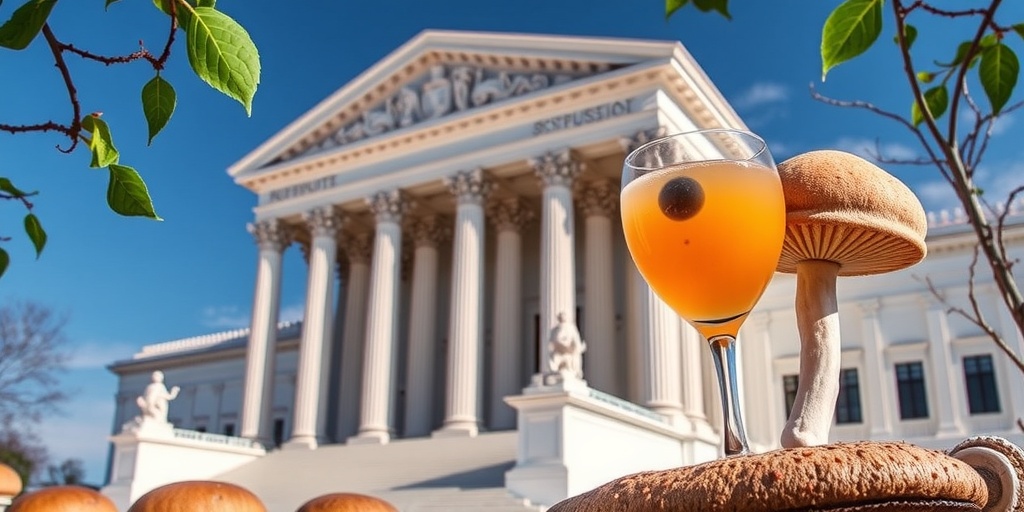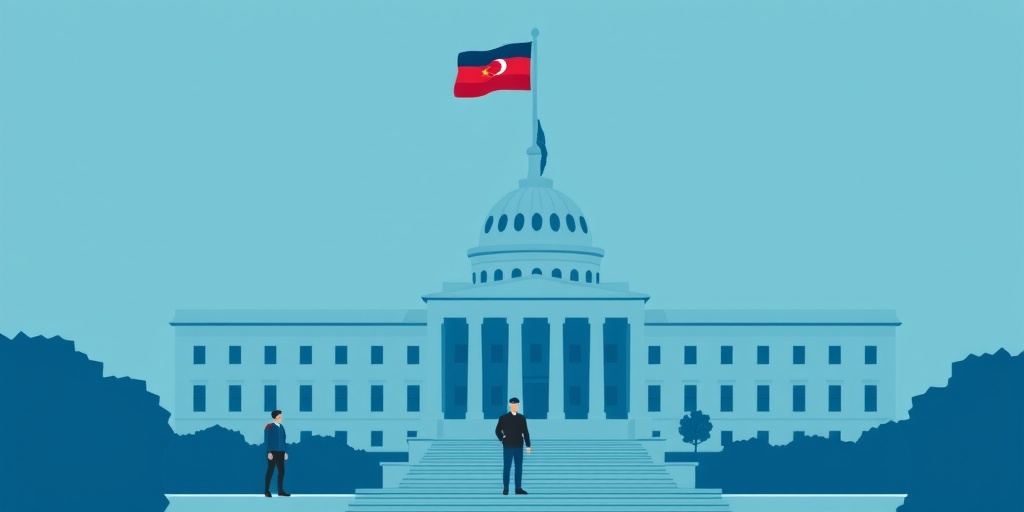Now Reading: Supreme Court Hears Bank Fraud Case Amid Cookies, Cocktails, and Mushrooms
-
01
Supreme Court Hears Bank Fraud Case Amid Cookies, Cocktails, and Mushrooms
Supreme Court Hears Bank Fraud Case Amid Cookies, Cocktails, and Mushrooms

In a spirited session on Tuesday, the Supreme Court engaged in a lively debate involving cookies, cocktails, and toxic mushrooms, as they sought to delineate the significant line between misleading statements and outright lies. The case at the heart of the discussion involved Patrick Daley Thompson, a former Chicago alderman who has familial ties to two former mayors of the city: Richard J. Daley and Richard M. Daley. Though Thompson admitted to providing misleading information to bank regulators, he maintained that his statements did not rise to the level of being criminally false.
Throughout the proceedings, justices posed vibrant and creative questions, hoping to unravel the nuances between statements that are misleading and those that are categorically false. Chief Justice John G. Roberts Jr. brought up a hypothetical scenario involving a motorist who, upon being stopped for suspected driving under influence, claimed to have consumed only one cocktail while neglecting to mention he had also had four glasses of wine. This example aimed to challenge the boundaries defining falsehoods.
Caroline A. Flynn, the attorney representing the federal government, articulated that a jury could categorize the motorist’s statement as false due to the expectation for a complete account of alcohol consumption when being questioned by law enforcement. Justices were not shy about exploring various real-life contexts leading to the definition of truthfulness. Justice Ketanji Brown Jackson introduced a playful analogy involving a child who claims to have eaten three cookies when, in reality, the child had consumed ten. Flynn noted that in this scenario, the context of the inquiry was critical. She explained that if a parent asked, “Did you eat all the cookies?” and the child responded with “three,” this would count as a false statement. However, if the parent simply asked how many cookies were eaten and the child’s answer was three, it would not be misleading.
Justice Sonia Sotomayor further prompted the conversation by questioning whether it would be misleading to label toxic mushrooms as “a hundred percent natural.” Despite the intricate topic being discussed, Flynn refrained from giving a straightforward answer.
The case in question, identified as Thompson v. United States, No. 23-1095, originated from actions taken by Thompson between 2011 and 2014, during which he secured three loans from Washington Federal Bank for Savings. The loans were intended to finance various personal expenses: $110,000 for a law firm, $20,000 for a tax obligation, and $89,000 to settle a debt owed to another bank. Notably, he made a single payment of $390 in 2012, after which the bank failed in 2017 without pressing him for more payments.
When the Federal Deposit Insurance Corporation, alongside a loan servicer, sought repayment of the loans with accrued interest amounting to around $270,000, Thompson reported that he had borrowed $110,000, which was technically accurate yet left out pertinent details. Following negotiations, Thompson reimbursed the principal in 2018 but omitted the interest, leading to federal prosecutors charging him two years later for providing “any false statement or report” to sway the FDIC’s decisions.
Thompson faced conviction resulting in a $50,000 interest repayment alongside a four-month prison sentence. His lawyer, Chris C. Gair, argued that Thompson’s statements were contextually accurate, although the justices expressed skepticism towards this claim. Justice Elena Kagan commented that the jury had concluded Thompson’s statements were, in fact, false, and to rule favorably for him would imply that no reasonable jury could arrive at the opposite conclusion.
Justices Neil M. Gorsuch and Brett M. Kavanaugh emphasized that the Supreme Court was tasked with determining whether federal law, in a general capacity, encompasses misleading statements, rather than delving into the particulars of Thompson’s conviction — a matter left to lower courts.
Justice Samuel A. Alito Jr. requested an example of a misleading statement that did not constitute a falsehood. Gair humorously illustrated this with his personal experience: modifying his website to advertise “40 years of litigation experience” alongside a claim of being a “Supreme Court advocate.” His response spurred laughter, particularly from Justice Kagan, who commended his humility and the light-heartedness he brought to the serious nature of the discussion.
As the arguments drew to a close, the court was left grappling with profound questions about the ambiguity within legal definitions of truthfulness, the nature of misleading statements, and their implications in the judicial system. The outcome of this case could set precedential standards on how misleading information is treated under federal law, potentially impacting similar cases in the future.
Stay Informed With the Latest & Most Important News
Previous Post
Next Post
-
 01New technology breakthrough has everyone talking right now
01New technology breakthrough has everyone talking right now -
 02Unbelievable life hack everyone needs to try today
02Unbelievable life hack everyone needs to try today -
 03Fascinating discovery found buried deep beneath the ocean
03Fascinating discovery found buried deep beneath the ocean -
 04Man invents genius device that solves everyday problems
04Man invents genius device that solves everyday problems -
 05Shocking discovery that changes what we know forever
05Shocking discovery that changes what we know forever -
 06Internet goes wild over celebrity’s unexpected fashion choice
06Internet goes wild over celebrity’s unexpected fashion choice -
 07Rare animal sighting stuns scientists and wildlife lovers
07Rare animal sighting stuns scientists and wildlife lovers





















